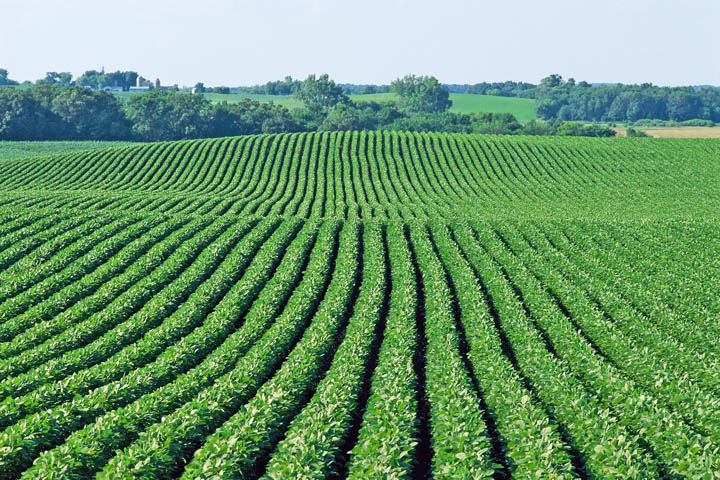
One factor that could impact a bullish outlook is a 25 percent chance that a financial catastrophe in Europe could trigger another global recession in the next couple of years.Other factors that will maintain agriculture growth: Demand driven by global economic growth and the rise of the middle class in developing countries; the value of the dollar; global biofuels production; energy prices; and biotechnology development.

A tsunami of new demand, particularly from China and India, should keep commodity prices and producer profitability strong over the next decade, according to Michael Dwyer, director of global policy analysis for the USDA’s Foreign Agricultural Service, speaking at the USA Rice Outlook Conference, in Austin, Texas.
While Dwyer stopped short of saying that agriculture had entered a sort of “golden age” of profitability, he noted agriculture continues as one of the bright spots in the struggling global economy these days.
Dwyer says that one factor that could impact his fairly bullish outlook is a 25 percent chance that a financial catastrophe in Europe could trigger another global recession in the next couple of years. “If that happens, the value of the euro will fall, the dollar will rise and commodity prices will fall. What we’re worried about for China is a hard landing. China’s economy is starting to slow down. One third of all new construction in Shanghai is empty. This is the first sign of a real estate bubble.”
Other factors to keep an eye on the coming years, according to Dwyer.
Demand driven by global economic growth and the rise of the middle class in developing countries– “The demand theme will affect every commodity, not just rice, and not just American rice. Studies show that when there is a dollar increase in income, consumers in China, India, Latin America and Southeast Asia will spend 20 cents to 40 cents of that increase on food. This has a tremendous impact on global food demand. Prices have to rise as a rationing device.”
The value of the dollar– “When the dollar goes up, commodity prices go down. When the dollar goes down, commodity prices go up. Over the next 10 years, we expect the dollar to fall by another 14 percent. If that’s true, it’s going to continue to put upward pressure on commodity prices.”
Global biofuels production– Dwyer noted that if more land goes into feedstock for biofuels, “it means it’s coming out of land for other crops. All commodities are getting a price spike from what is happening in biofuel production. In other words, there is a substitution factor. But what if there is a breakthrough on a technology where suddenly the cost of producing biofuel drops to 50 cent to 75 cents. It would definitely impair demand for corn feedstock.”
Trade and trade liberalization– “Many countries are signing free trade agreements. These agreements have effectively lowered the levels of protection, so that production happens in the countries that have a comparative advantage. As a low cost producer in many crops, we will be the big winner in trade liberalization. World trade is up over 150 percent since 2000. Imports have gone up in almost every country, as have exports.”
Policy errors by government– Never underestimate the ability of government to make mistakes, Dwyer says. “Look what happened to rice prices back in 2008-09. There wasn’t really a rice shortage. That price spike should not have happened. But it did because a number of rice countries started banning rice exports to keep the price of rice low to their domestic constituency. All it did was shift those price pressures into the global market.”
The result was a crisis of confidence, according to Dwyer. “We have spent the last 30 or 40 years trying to convince the rest of the world that you can rely on a world trading system for the most basic human needs. When we had a crisis in 2008-09, countries basically adopted the law of the jungle, every man for himself. It sent a powerful negative signal to importers around the world that maybe we can’t trust the global trading system. I’d love to tell you that it’s never going to happen again, but we saw it last year with Russian wheat.”
Energy and biotech
Energy prices– “At the end of the day, if you really want to know where food prices are going to go, look at oil prices, because they’re going in the same direction. Those two sectors are linked at the hip.”
Dwyer noted that the Chinese middle class will also put pressure on energy prices. “As its middle class grows, they’ll purchase more cars, which will require more energy. The same factors that are affecting agriculture are affecting energy prices.”
Biotechnology development– “With demand building around the world, we have to do one of two things, put a lot more land into production or increase yields. One way to get yields up is through biotechnology. The problem is that acceptance of biotechnology is not universal.”
Land expansion– To satisfy demand for food and fiber, increased production will come from both yield advances and more land coming into production, Dwyer says. The latter won’t happen unless producers believe that high prices are in for the long run. “In our view that is exactly what is going to happen. Much of the new growth will come from South America and the former Soviet Union.”
About the Author(s)
You May Also Like





